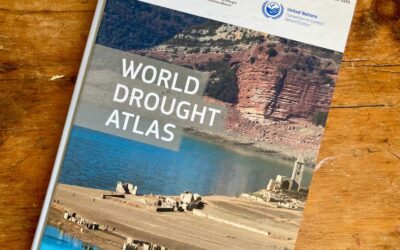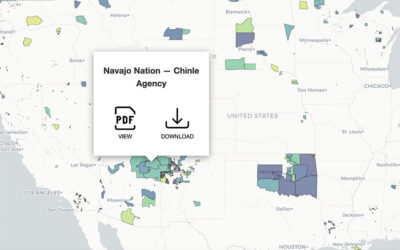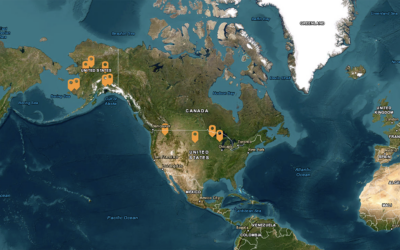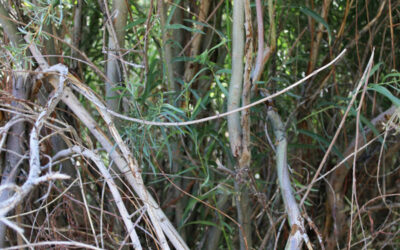DRI’s Native Waters on Arid Lands project was recently featured in the 2024 World Drought Atlas, a 175-page hardcover reference book for decision-makers detailing drought impacts and adaptation solutions from around the world.
New Climate Projections Released for Tribal Lands
Earth’s climate future is often discussed in terms of degrees of warming, but for farmers and ranchers, temperature is not the only metric that matters. Other variables such as the number of frost-free days, timing of first snowfall, or changes in spring and summer precipitation are critical to planning future planting, growing, irrigating, and harvesting activities. To help Native agricultural producers prepare for the changes to come, Native Climate has compiled detailed local climate projections for 633 tribally controlled areas in the United States, including Alaska Native Villages and State Designated Tribal Areas, and climate divisions for the State of Hawai‘i.
Native Climate Reporter Team Presents, Listens, and Learns at Indigenous Climate Conference in Alaska
Along Alaska’s western coastline, 400 miles from the nearest road system, villagers from the Indigenous community of Newtok were scheduled for permanent evacuation in mid-October due to the irreversible threat of rising seas. The story, recounted by Newtok resident Della Carl in September at the National Indigenous Climate Conference in Anchorage, Alaska, embedded itself deep in the hearts and minds of each member of the audience, making it clear not just that sea level rise is happening, but why it matters. Such is the power of a well-told story.
Native Climate Team Holds Indigenous Education Workshop
The Desert Research Institute’s Native Climate education team, Ileah Kirchoff and Crystal Miller, hosted a collaborative workshop between the Walker River Paiute Tribe and the Fallon Paiute Shoshone Tribe on May 4, 2024. The session focused on Indigenous curriculum development and the incorporation of Traditional Ecological Knowledge (TEK), particularly in lessons about the climate crisis.
Estom Yumeka Maidu Student Teaches DIY Air Filtration Techniques to Help Reservation Communities During Wildfire Season
Many houses have no particulate filtration systems, especially on reservations. Piercen Nguyen and his colleagues have a proven solution.
Restoring our relationship with hímu (willow) requires human interaction rather than protection
The continuation of life for the Wá∙šiw is based around plants like hímu. With it, they can help us understand our problems.





